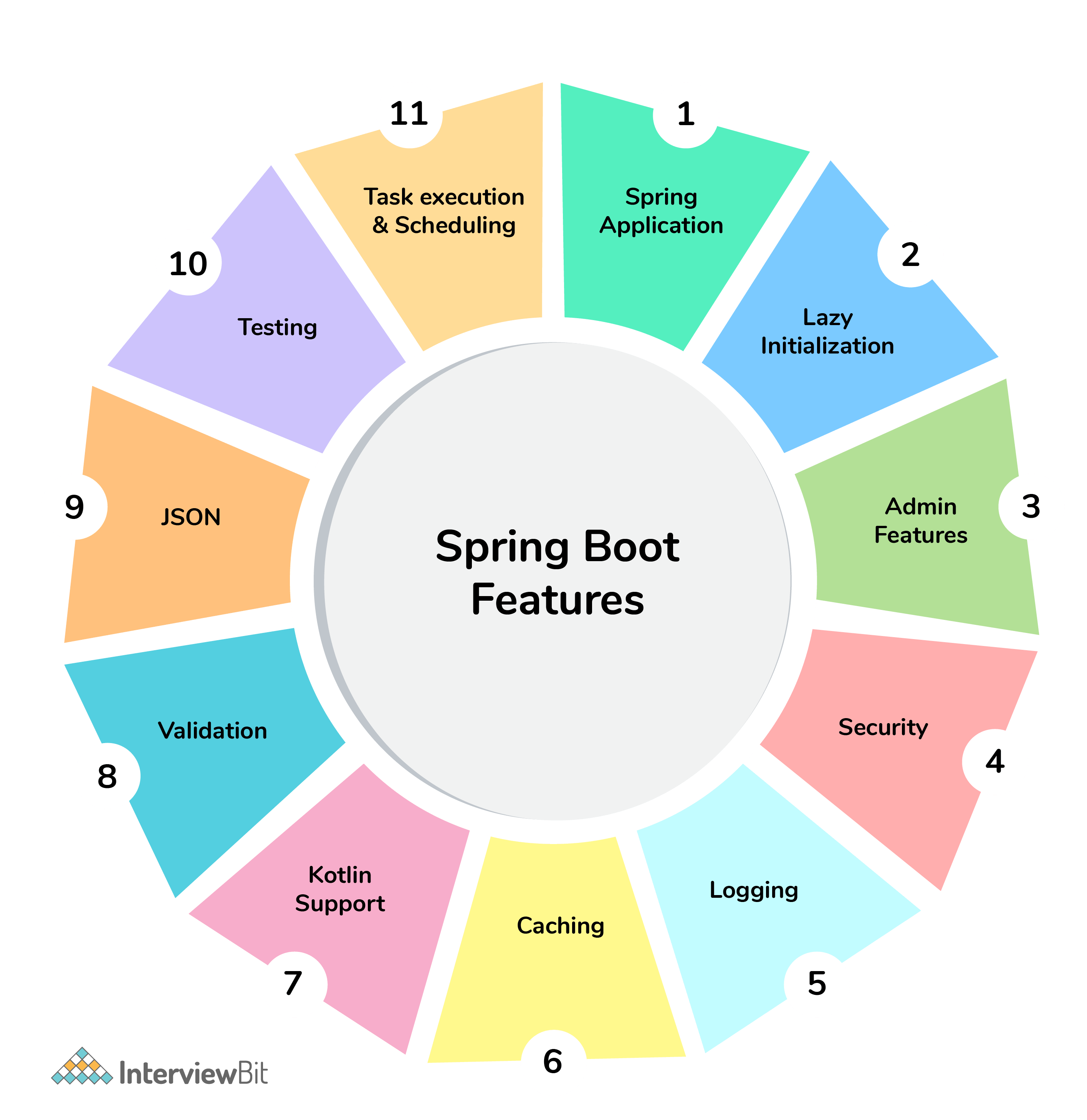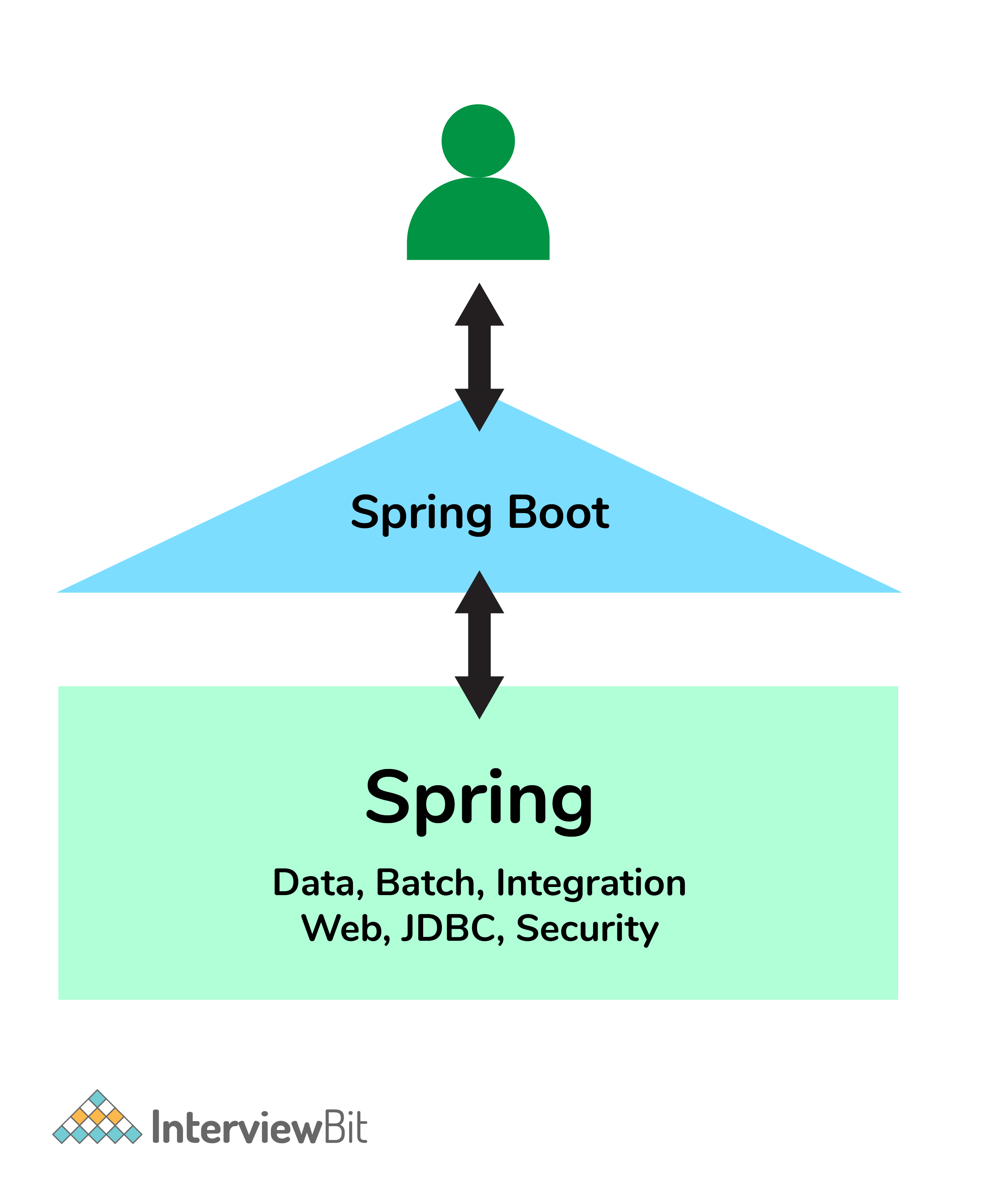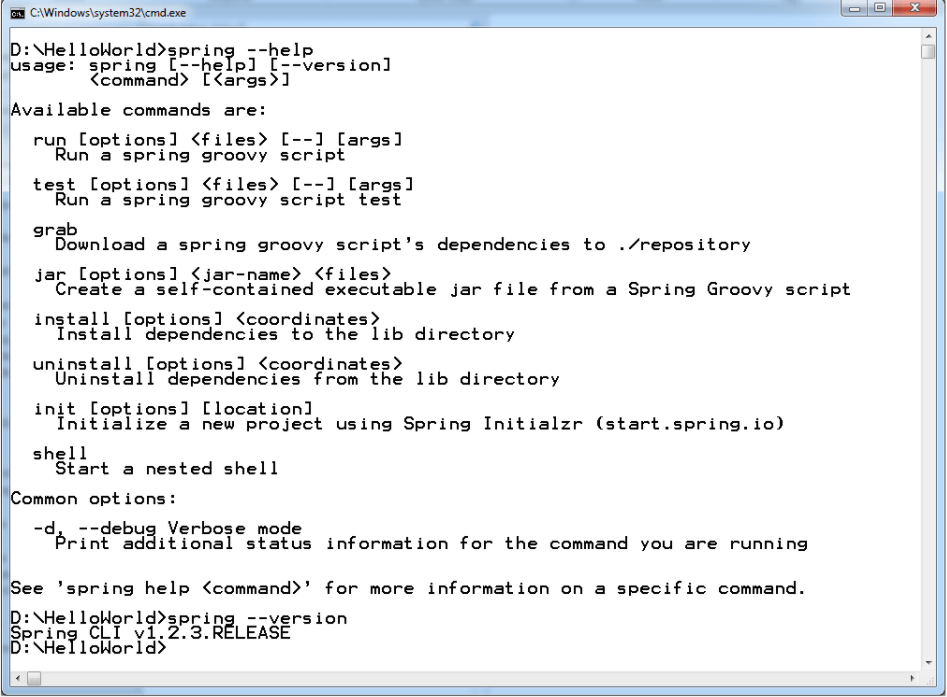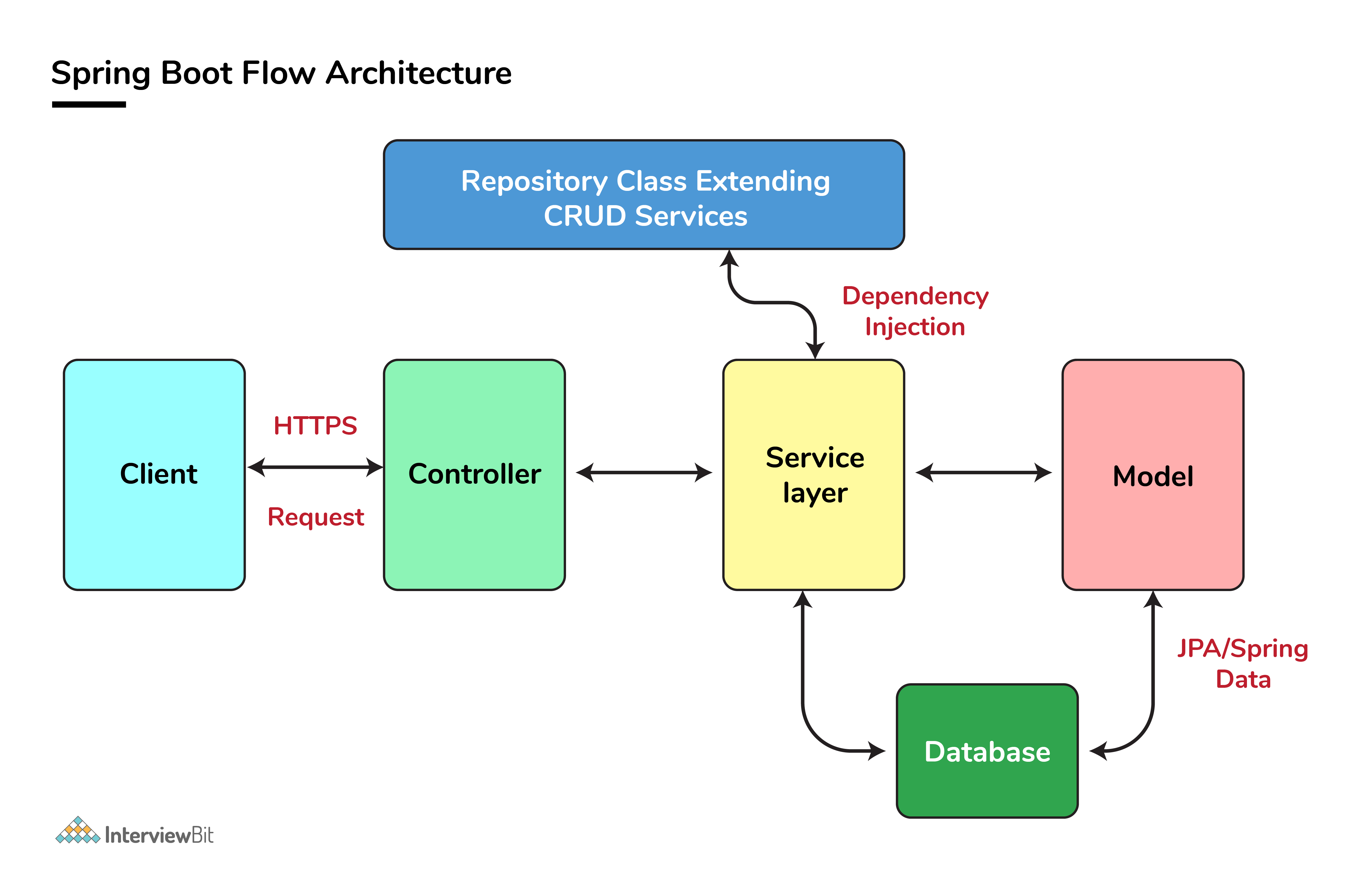Spring Boot Interview Questions
Spring boot is the hottest topic of discussion in interviews if it comes to Java Application development. Because of its fast, low configuration, inbuilt server, and monitoring features, it helps to build a stand-alone Java application from scratch with very robust and maintainable.
The article will walk you through the Spring Boot interview questions for basic to advanced levels.
What is Spring boot?
Sprint boot is a Java-based spring framework used for Rapid Application Development (to build stand-alone microservices). It has extra support of auto-configuration and embedded application servers like tomcat, jetty, etc.
Features of Spring Boot that make it different?
- Creates stand-alone spring application with minimal configuration needed.
- It has embedded tomcat, jetty which makes it just code and run the application.
- Provide production-ready features such as metrics, health checks, and externalized configuration.
- Absolutely no requirement for XML configuration.

Spring Boot Interview Questions For Freshers
1. What are the advantages of using Spring Boot?
The advantages of Spring Boot are listed below:
- Easy to understand and develop spring applications.
- Spring Boot is nothing but an existing framework with the addition of an embedded HTTP server and annotation configuration which makes it easier to understand and faster the process of development.
- Increases productivity and reduces development time.
- Minimum configuration.
- We don’t need to write any XML configuration, only a few annotations are required to do the configuration.


 Real-Life Problems
Real-Life Problems
 Prep for Target Roles
Prep for Target Roles
 Custom Plan Duration
Custom Plan Duration
 Flexible Plans
Flexible Plans
2. What are the Spring Boot key components?
Below are the four key components of spring-boot:
- Spring Boot auto-configuration.
- Spring Boot CLI.
- Spring Boot starter POMs.
- Spring Boot Actuators.
3. Why Spring Boot over Spring?
Below are some key points which spring boot offers but spring doesn’t:
- Starter POM.
- Version Management.
- Auto Configuration.
- Component Scanning.
- Embedded server.
- InMemory DB.
- Actuators
Spring Boot simplifies the spring feature for the user:

4. What is the starter dependency of the Spring boot module?
Spring boot provides numbers of starter dependency, here are the most commonly used -
- Data JPA starter.
- Test Starter.
- Security starter.
- Web starter.
- Mail starter.
- Thymeleaf starter.
5. How does Spring Boot works?
Spring Boot automatically configures your application based on the dependencies you have added to the project by using annotation. The entry point of the spring boot application is the class that contains @SpringBootApplication annotation and the main method.
Spring Boot automatically scans all the components included in the project by using @ComponentScan annotation.
 Learn via our Video Courses
Learn via our Video Courses
6. What does the @SpringBootApplication annotation do internally?
The @SpringBootApplication annotation is equivalent to using @Configuration, @EnableAutoConfiguration, and @ComponentScan with their default attributes. Spring Boot enables the developer to use a single annotation instead of using multiple. But, as we know, Spring provided loosely coupled features that we can use for each annotation as per our project needs.
7. What is the purpose of using @ComponentScan in the class files?
Spring Boot application scans all the beans and package declarations when the application initializes. You need to add the @ComponentScan annotation for your class file to scan your components added to your project.


 Real-Life Problems
Real-Life Problems
 Detailed reports
Detailed reports
8. How does a spring boot application get started?
Just like any other Java program, a Spring Boot application must have a main method. This method serves as an entry point, which invokes the SpringApplication#run method to bootstrap the application.
@SpringBootApplication
public class MyApplication {
public static void main(String[] args) {
SpringApplication.run(MyApplication.class);
// other statements
}
}9. What are starter dependencies?
Spring boot starter is a maven template that contains a collection of all the relevant transitive dependencies that are needed to start a particular functionality.
Like we need to import spring-boot-starter-web dependency for creating a web application.
<dependency>
<groupId> org.springframework.boot</groupId>
<artifactId> spring-boot-starter-web </artifactId>
</dependency>10. What is Spring Initializer?
Spring Initializer is a web application that helps you to create an initial spring boot project structure and provides a maven or gradle file to build your code. It solves the problem of setting up a framework when you are starting a project from scratch.
11. What is Spring Boot CLI and what are its benefits?
Spring Boot CLI is a command-line interface that allows you to create a spring-based java application using Groovy.
Example: You don’t need to create getter and setter method or access modifier, return statement. If you use the JDBC template, it automatically loads for you.
12. What are the most common Spring Boot CLI commands?
-run, -test, -grap, -jar, -war, -install, -uninstall, --init, -shell, -help.
To check the description, run spring --help from the terminal.

Advanced Spring Boot Questions
1. What Are the Basic Annotations that Spring Boot Offers?
The primary annotations that Spring Boot offers reside in its org.springframework.boot.autoconfigure and its sub-packages. Here are a couple of basic ones:
@EnableAutoConfiguration – to make Spring Boot look for auto-configuration beans on its classpath and automatically apply them.
@SpringBootApplication – used to denote the main class of a Boot Application. This annotation combines @Configuration, @EnableAutoConfiguration, and @ComponentScan annotations with their default attributes.
2. What is Spring Boot dependency management?
Spring Boot dependency management is used to manage dependencies and configuration automatically without you specifying the version for any of that dependencies.
3. Can we create a non-web application in Spring Boot?
Yes, we can create a non-web application by removing the web dependencies from the classpath along with changing the way Spring Boot creates the application context.
4. Is it possible to change the port of the embedded Tomcat server in Spring Boot?
Yes, it is possible. By using the server.port in the application.properties.
5. What is the default port of tomcat in spring boot?
The default port of the tomcat server-id 8080. It can be changed by adding sever.port properties in the application.property file.
6. Can we override or replace the Embedded tomcat server in Spring Boot?
Yes, we can replace the Embedded Tomcat server with any server by using the Starter dependency in the pom.xml file. Like you can use spring-boot-starter-jetty as a dependency for using a jetty server in your project.
7. Can we disable the default web server in the Spring boot application?
Yes, we can use application.properties to configure the web application type i.e spring.main.web-application-type=none.
8. How to disable a specific auto-configuration class?
You can use exclude attribute of @EnableAutoConfiguration if you want auto-configuration not to apply to any specific class.
//use of exclude
@EnableAutoConfiguration(exclude={className})9. Explain @RestController annotation in Spring boot?
It is a combination of @Controller and @ResponseBody, used for creating a restful controller. It converts the response to JSON or XML. It ensures that data returned by each method will be written straight into the response body instead of returning a template.
10. What is the difference between @RestController and @Controller in Spring Boot?
@Controller Map of the model object to view or template and make it human readable but @RestController simply returns the object and object data is directly written in HTTP response as JSON or XML.
11. Describe the flow of HTTPS requests through the Spring Boot application?
On a high-level spring boot application follow the MVC pattern which is depicted in the below flow diagram.

12. What is the difference between RequestMapping and GetMapping?
RequestMapping can be used with GET, POST, PUT, and many other request methods using the method attribute on the annotation. Whereas getMapping is only an extension of RequestMapping which helps you to improve on clarity on request.
13. What is the use of Profiles in spring boot?
While developing the application we deal with multiple environments such as dev, QA, Prod, and each environment requires a different configuration. For eg., we might be using an embedded H2 database for dev but for prod, we might have proprietary Oracle or DB2. Even if DBMS is the same across the environment, the URLs will be different.
To make this easy and clean, Spring has the provision of Profiles to keep the separate configuration of environments.
14. What is Spring Actuator? What are its advantages?
An actuator is an additional feature of Spring that helps you to monitor and manage your application when you push it to production. These actuators include auditing, health, CPU usage, HTTP hits, and metric gathering, and many more that are automatically applied to your application.
15. How to enable Actuator in Spring boot application?
To enable the spring actuator feature, we need to add the dependency of “spring-boot-starter-actuator” in pom.xml.
<dependency>
<groupId> org.springframework.boot</groupId>
<artifactId> spring-boot-starter-actuator </artifactId>
</dependency>16. What are the actuator-provided endpoints used for monitoring the Spring boot application?
Actuators provide below pre-defined endpoints to monitor our application -
- Health
- Info
- Beans
- Mappings
- Configprops
- Httptrace
- Heapdump
- Threaddump
- Shutdown
17. How to get the list of all the beans in your Spring boot application?
Spring Boot actuator “/Beans” is used to get the list of all the spring beans in your application.
18. How to check the environment properties in your Spring boot application?
Spring Boot actuator “/env” returns the list of all the environment properties of running the spring boot application.
19. How to enable debugging log in the spring boot application?
Debugging logs can be enabled in three ways -
- We can start the application with --debug switch.
- We can set the logging.level.root=debug property in application.property file.
- We can set the logging level of the root logger to debug in the supplied logging configuration file.
20. Where do we define properties in the Spring Boot application?
You can define both application and Spring boot-related properties into a file called application.properties. You can create this file manually or use Spring Initializer to create this file. You don’t need to do any special configuration to instruct Spring Boot to load this file, If it exists in classpath then spring boot automatically loads it and configure itself and the application code accordingly.
21. What is dependency Injection?
The process of injecting dependent bean objects into target bean objects is called dependency injection.
- Setter Injection: The IOC container will inject the dependent bean object into the target bean object by calling the setter method.
- Constructor Injection: The IOC container will inject the dependent bean object into the target bean object by calling the target bean constructor.
- Field Injection: The IOC container will inject the dependent bean object into the target bean object by Reflection API.
22. What is an IOC container?
IoC Container is a framework for implementing automatic dependency injection. It manages object creation and its life-time and also injects dependencies into the class.
Important Resources
Spring Boot MCQ Questions
Spring is used for?
Default HTML template engine in Spring Boot?
Annotation used for handling GET requests?
Annotation used for Rest Controller?
Which annotation is not Spring Boot Annotation?
Minimum Java version needed for Spring Boot?
Which of the following is used by Maven?
Is Dependency needed to create a Spring Boot web application?
Starting points of Spring Boot Application?
Database object must be annotated with?












 Download PDF
Download PDF



















